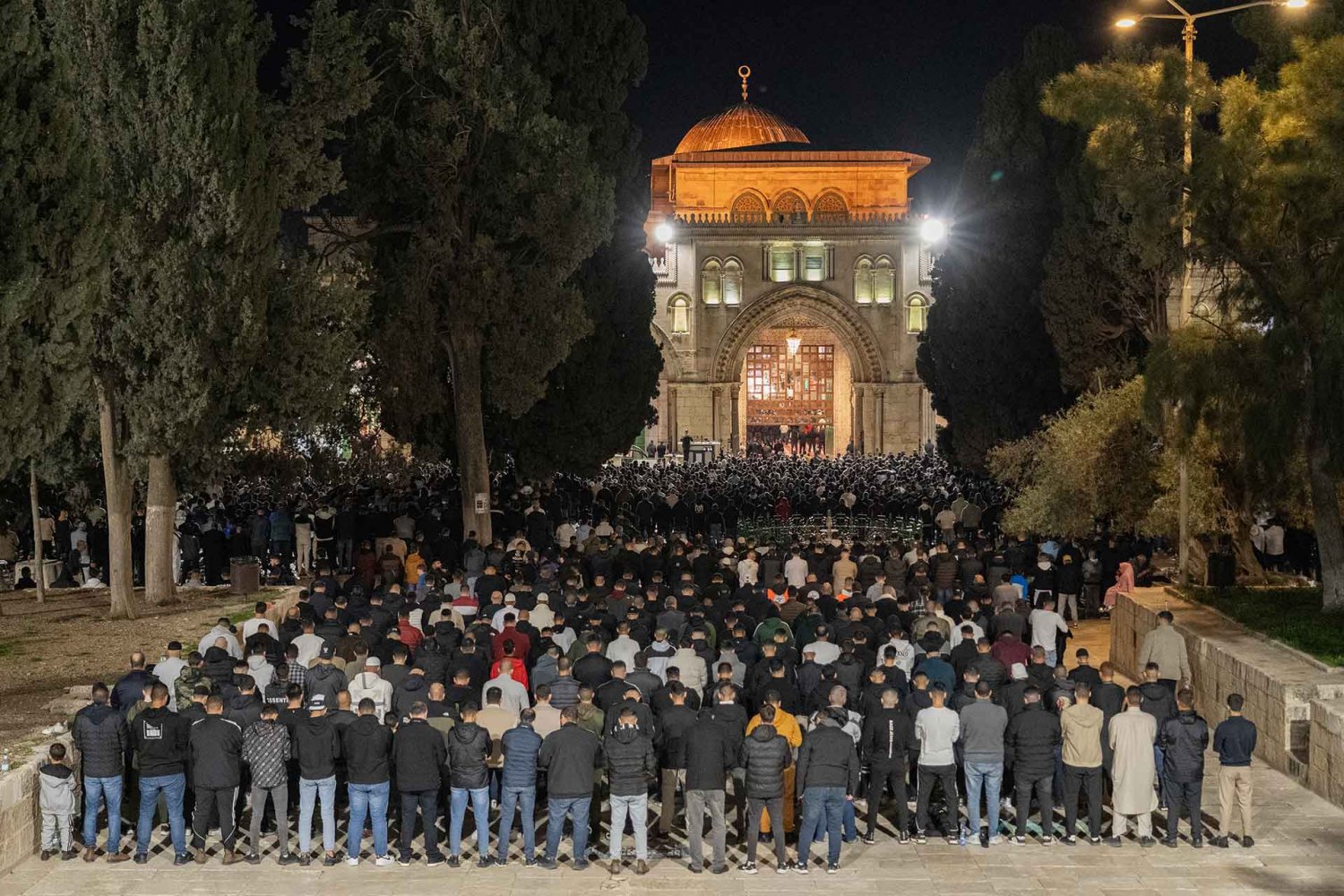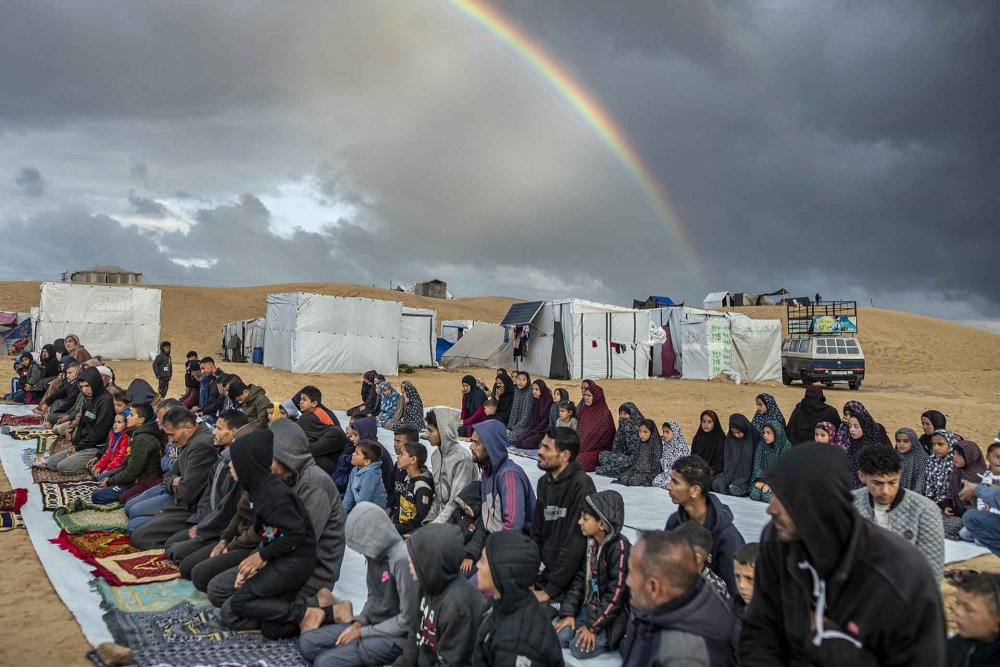On Eid al-Fitr this year, this phenomenon of food distribution at cemeteries was more noticeable than usual. As soon as you climbed the steps leading to Bab al-Asbat cemetery, someone was there to greet you with a plate of small baklava sweets. Next to him stood a person distributing bottles of water. Not far away, a host of others were distributing various pastries and drinks: shortbread, water, dates, plastic water cups, baklava, special Eid cakes, and ma‘moul.
There, in the middle of the cemetery, a young man implored passersby in a loud voice: “This is for my father’s soul. Please take whatever you want and pray for mercy for my father.” He was distributing donuts.
The young man in black clothes was standing at the grave of his father, who seemed to have recently died. As people left al-Aqsa Mosque and made their way home, they stopped to pick up a pastry and a cup of water, and they recited the al-Fatiha prayer for the young man’s father. The son implored everyone who could hear him with an astonishing insistence; he was clearly in pain and wanted everyone in Jerusalem to pray for his father.
Dr. Ali Qleibo, a Palestinian anthropologist and ethnographer who has lived in Jerusalem for most of his life, told Jerusalem Story: “There are many aspects of the sacred character associated with Islamic thought. We see one of its aspects in Eid in the concept of ‘good deeds’ and ‘benevolence’ in visiting graves, in ‘repairing the heart,’ and visiting women with few relatives (silat al-rahm, ‘from the ties of kinship’), and giving ‘eidiyya’ (money to children and some female relatives). After the morning Eid prayer, we would go to the cemetery and recite al-Fatiha for our dead, which was considered good for them, for us, and for whoever listens to our recitation . . . In those days in the happy past, beggars would gather at the entrances to the Haram al-Sharif, the Bab al-Rahma cemetery, and the Bab al-Asbat cemetery, waiting for the Eid prayer to be over.”2



